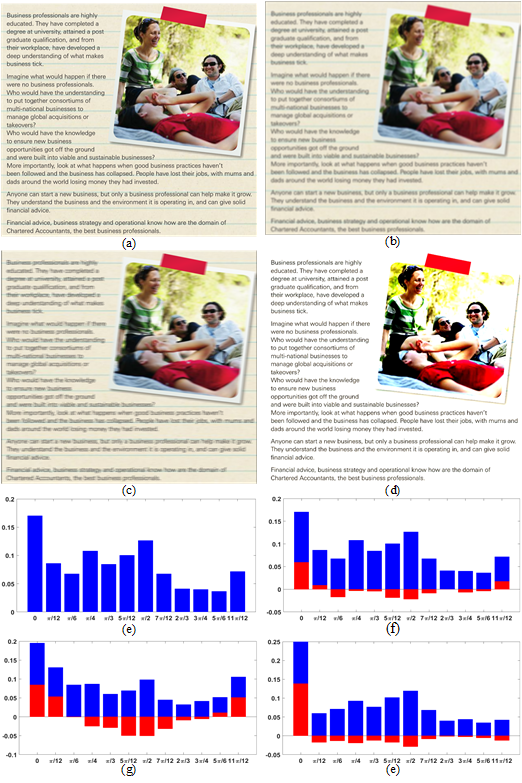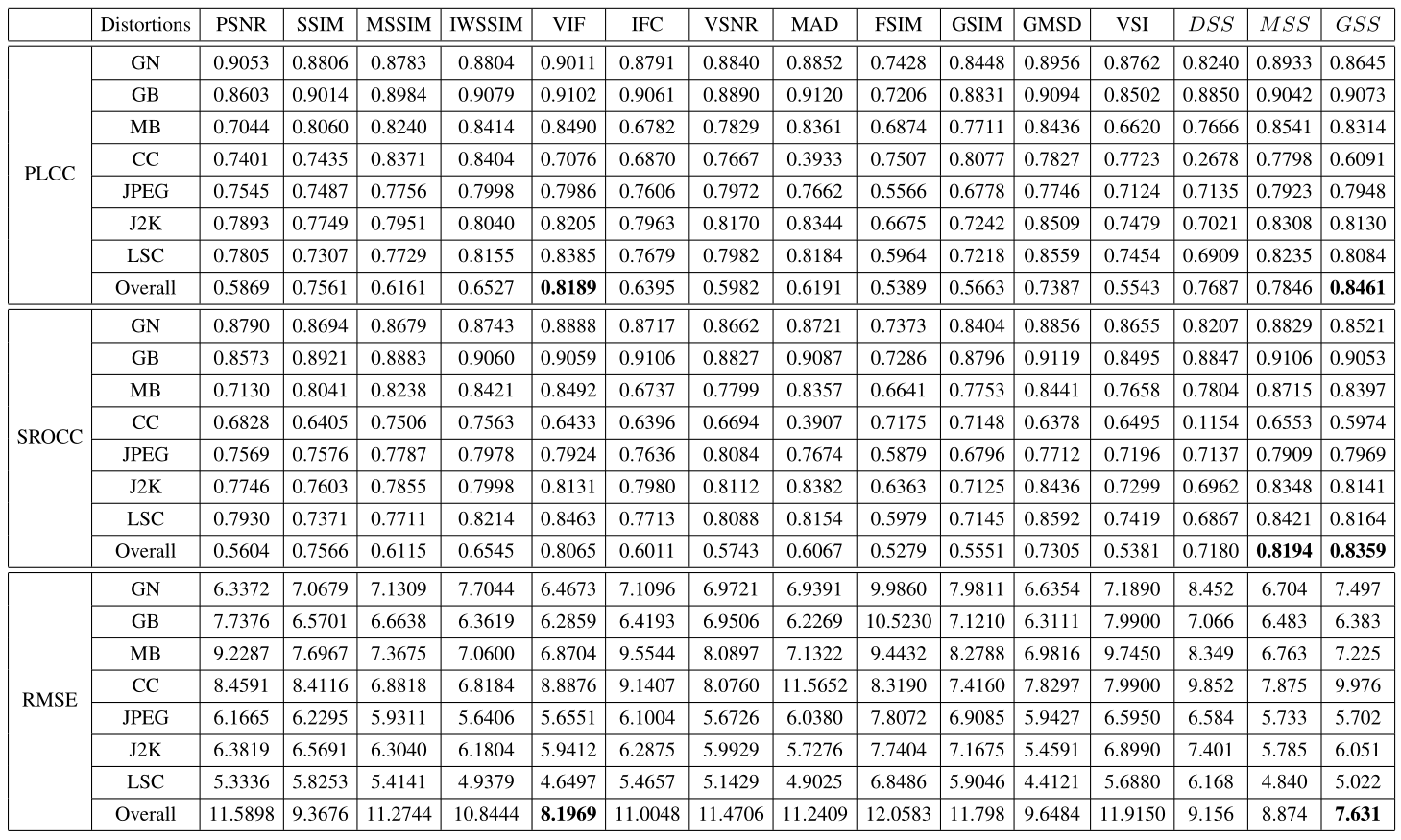| GSS |
Z. Ni, L. Ma, H. Zeng, C. Cai, and K.-K. Ma, "Gradient direction for screen content image quality assessment", IEEE Signal Processing Letters, vol. 23, no. 10, pp. 1394�C1398, August 2016. [ Full Text] |
| SSIM |
Z. Wang, A. C. Bovil, H. R. Sheikh, and E. P. Simoncelli, "Image Quality Assessment: From Error Visibility to Structural Similarity", IEEE Transactions on Image Processing, 2004. [ Full Text] |
| MSSIM |
Z. Wang, E. P. Simoncelli, and A. C. Bovil, "Multi-Scale Structural Similarity for Image Quality Assessment", IEEE Conference on Signals, Systems and Computers, 2003. [ Full Text] |
| IWSSIM |
Z. Wang, and Q. Li, "Information Content Weighting for Perceptual Image Quality Assessment", IEEE Transactions on Image Processing, 2011. [ Full Text] |
| VIF |
H. R. Sheikh, and A. C. Bovik, "Image Information and Visual Quality", IEEE Transactions on Image Processing, 2006. [ Full Text] |
| IFC |
H. R. Sheikh, A. C. Bovik, and G. de Veciana "An Information Fidelity Creation for Image quality Assessment Using Natural Scene Statistics", IEEE Transactions on Image Processing, 2005. [ Full Text] |
| VSNR |
D. M. Chandler, and S. S. Hemami, "VSNR: A Wavelet-Based visual Signal-to-Noise Ratio for Natural Images", IEEE Transactions on Image Processing, 2007. [ Full Text] |
| MAD |
E. C. Larson, and D. M. Chandler, "Most Apparent Distortion: Full-Reference Image Quality Assessment and the Role of Strategy", Journal of Electronic Imaging, 2010. [ Full Text] |
| FSIM |
L. Zhang, L. Zhang, X. Mou, and D. Zhang, "FSIM: A Feature Similarity Index for Image Quality Assessment", IEEE Transactions on Image Processing, 2011. [ Full Text] |
| GSIM |
A. Liu, W. Lin, and M. Narwaria, "Image Quality Assessment Based on Gradient Similarity", IEEE Transactions on Image Processing, 2012. [ Full Text] |
| GMSD |
W. Xue, L. Zhang, X. Mou, and A. C. Bovik, "Gradient Magnitude Similarity Deviation: A Highly Efficient Perceptual Image Quality Index", IEEE Transactions on Image Processing, 2014. [ Full Text] |
| VSI |
L. Zhang, and Y. Shen, and H. Li "VSI: A Visual Saliency-Induced Index for Perceptual Image Quality Assessment", IEEE Transactions on Image Processing, 2014. [ Full Text] |
| SIQAD |
H. Yang, Y. Fang, and W. Lin, "Perceptual Quality Assessment of Screen Content Images", IEEE Transactions on Image Processing, vol. 24, no. 11, pp. 4408-4421, Aug. 2015. [ Full Text][ Download] |



